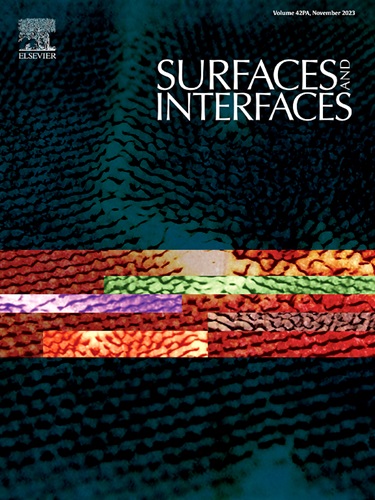Preparation of heterostructured MnSe/FeSe@C nanorods for high-performance Na-ion storage
IF 5.7
2区 材料科学
Q2 CHEMISTRY, PHYSICAL
引用次数: 0
Abstract
The large radius of sodium ions causes an increase in anode volume during charge/discharge cycles, which can damage the electrode structure and deteriorate the battery's cycling performance. The conductivity of electrode materials and sodium-ion diffusion rate can be improved through materials morphology control, composite material construction, and doping, consequently boosting the performance rate and cycling stability of Na+ batteries. In this work, Mn/Fe bimetallic oxalate nanorod templates were prepared using liquid-phase precipitation techniques, followed by calcination in air and coating with resorcinol-formaldehyde resin. Subsequently, carbon-coated MnSe/FeSe (MnSe/FeSe@C) nanorods were obtained through carbonization-selenization reactions. A reversible capacity of 263.1 mAh g−1 was retained by MnSe/FeSe@C nanorods after 3800 cycles at 10.0 A g−1 when utilized as an anode for Na+ batteries. The electrochemical characteristics are primarily attributed to the interactive effect of carbon coating and heterostructured MnSe/FeSe. The aggregation of MnSe/FeSe nanoparticles was effectively mitigated by the outer carbon coating, while the volume expansion during the reaction of MnSe/FeSe@C with sodium ions was effectively mitigated by the internal voids within the carbon layer of the nanorods. Furthermore, the bimetallic composition of the anode materials formed a well-defined phase interface, optimizing sodium-ion transport channels and enhancing the battery's charge-discharge rate performance. Electrolyte penetration was facilitated, the electrolyte contact area was increased, and the sodium ion transport pathway was shortened by the carbon-coated one-dimensional porous rod-like structure, contributing to improved energy efficiency, anode performance rate, and cycling stability. The results highlight the potential of MnSe/FeSe@C nanorods as an efficient anode material for next-generation Na+ battery.

求助全文
约1分钟内获得全文
求助全文
来源期刊

Surfaces and Interfaces
Chemistry-General Chemistry
CiteScore
8.50
自引率
6.50%
发文量
753
审稿时长
35 days
期刊介绍:
The aim of the journal is to provide a respectful outlet for ''sound science'' papers in all research areas on surfaces and interfaces. We define sound science papers as papers that describe new and well-executed research, but that do not necessarily provide brand new insights or are merely a description of research results.
Surfaces and Interfaces publishes research papers in all fields of surface science which may not always find the right home on first submission to our Elsevier sister journals (Applied Surface, Surface and Coatings Technology, Thin Solid Films)
 求助内容:
求助内容: 应助结果提醒方式:
应助结果提醒方式:


